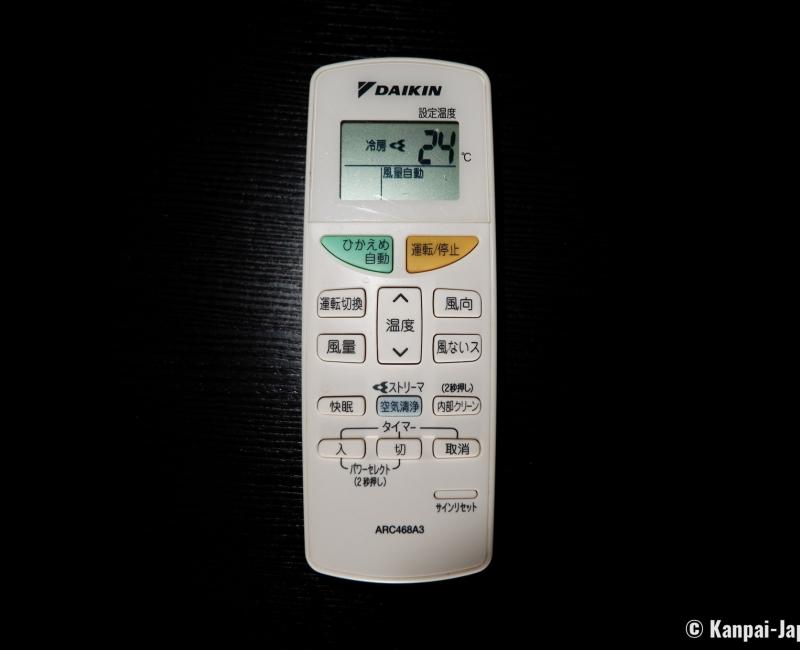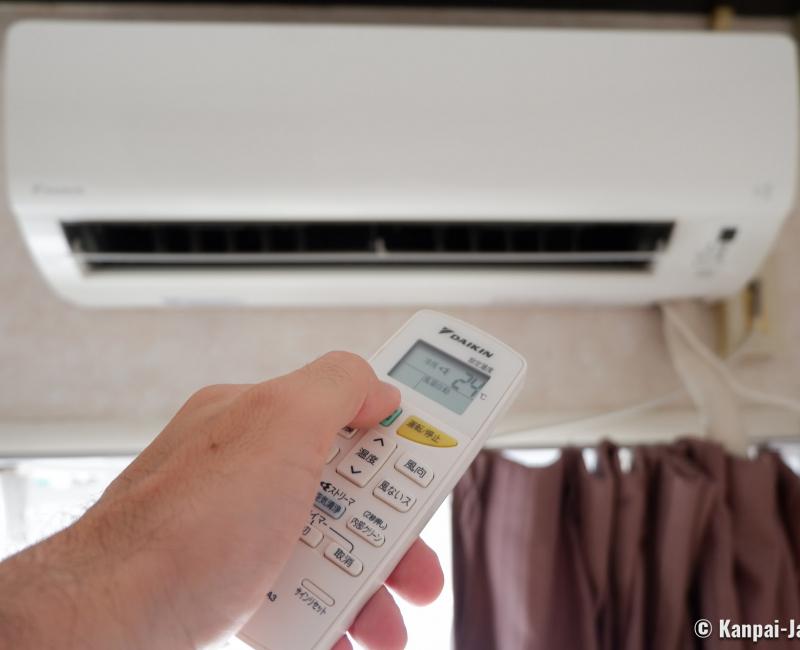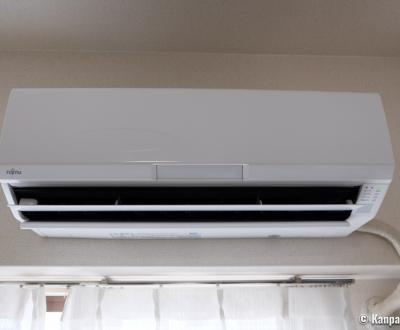A Guide to Air Conditioners in Japan
In Japanese "air conditioner" is said エアコン aircon and the word derives from the English term and composed of it first two syllables. There is no original Japanese word to name this recent technology, so the term is a wasei-eigo creation, meaning that new Japanese words were coined from English language.
The air conditioner is ubiquitous at home and public establishments alike, and it is used to cool or warm a room. It is an essential device and knowing how to use it helps enjoy one’s stay in Japan. A house with not no aircon is a rarity. Climate in the Japanese archipelago is characterized by very contrasting seasons: winter is rather cold and dry and summer hot and humid.
The Japanese electric appliances are seldom translated into other languages and knowing the main key words is necessary to understand how they work. After our guide to use washing machines in Japan, we put together the present guide to the air conditioners in Japan.
Finding your way around the rimokon remote control
The AC’s main unit is usually affixed above a window and is controlled by a remote control named リモコン rimokon in Japanese, from the contraction of the words "Remote Controller". Most of the devices sold are made by Japanese manufacturers (Daikin, Hitachi, Panasonic, Toshiba, Mitsubishi, Fujitsu, etc.) and most of them designed their remote controls in the simplest and most intuitive way. If no rimokon is in sight, look for a small control panel that should be affixed to the wall and may be hidden behind curtains.
The location of the buttons, the symbols and colors are often the same and give visual hints on the button’s function. Therefore, switching on or off the air conditioner (with the yellow button) of a room is easy, but you need to know more to adjust the settings to your needs. It is thus important to know the different modes available on a Japanese aircon, for example:
- Timer settings,
- Fan speed,
- Temperature settings, and,
- Dry mode.
Vocabulary for a standard Japanese AC remote control
You will find below a non-exhaustive list of the main terms to know for an efficient use of a standard AC unit:

Note that the self-cleaning function is only complementary to a regular maintenance of the device. The filters must be changed on a regular basis, and the motor must also be cleaned thoroughly as well. Make sure to check the user’s guide if you want to do it yourself. You can also hire a professional who will disassemble the unit and clean it with a pressure washer to make sure removing all mold and dust that settled over time.
Regularity in the maintenance of the house’s aircon will help purify indoor air and reduce energy bills. When moving in a new house, make sure to ask when the last thorough cleaning of the aircon was performed.
The Dry Mode’s advantages in Japan
The humidity rate in Japan is certainly higher than in most of Western countries, but the heat is not necessarily unbearable. So, one does not necessarily think of using the aircon, even though this device can help bring a lot of comfort.
The Dry Mode 除湿 joshitsu in Japanese, helps to dispel the unpleasant dampness of a room. During the rainy season tsuyu ☔️, usually between June and July, and even on any rainy day, this function is also very convenient for drying clothes indoor.

Tips to use the AC in summer and in winter
To make the best use of an air conditioner in Japan and avoid spending too much energy, it is necessary to know a few key elements related to life in Japan that we explain below.
Mind the temperature differences
The temperature variations between the room and the outdoor should not be too high. With a 5°C (9°F) difference, one already feels better, heat or cold-related sickness can be prevented, and the impact on the energy bill is also limited, in a nice ecological move. In Kanto and Kansai areas for example, it is recommended to set an ideal indoor temperature at 28-29°C (82,4 – 84,2°F) in summer and at 21-22°C (69,8-71,6°F) in winter.
Maintain a constant temperature in the house
Maintaining a steady temperature throughout the day is also an important factor to avoid energy over-consumption. For example, make sure the room is not heated by the sun in summer and use obscuring curtains カーテン遮光 kaaten shakou to create some shadow.
An AC unit has its functioning optimized for a definite superficies: usually one living room or possibly two small rooms. It is thus very important to tightly shut the doors to maintain the cool (or the heat) only in the very rooms where one is living and not throughout the house. As a matter of fact, some spaces do not need to be air-conditioned, such as a corridor or a kitchen, where cooking happens anyway. Moreover, when leaving the house for the day or for a long time, it is not recommended to let the AC on.
Lower the AC at night
At night, the outdoor temperature naturally lowers down, and it is not necessary to overuse the AC. We recommend setting the unit with a lower difference with outdoor temperature than during the daytime, at about 2 to 3°C in summer. Setting down the AC also lessens the noise the fans can make and thus help ensure a better night for those who are sensitive to the noise.
In winter, Japanese people tend to sleep in futon covered by warm blankets or duvets, and the AC in heat mode can be enough when the temperature is set to 18 or 19°C, or even shut down for the less chilly.
Air out the house whenever possible
As soon as the wind rises and cool air is blowing outside, it is better to turn off the AC and open the windows to create an airflow in the house. As a general rule, it is recommended to ventilate the house every day, even for a few minutes, to renew the indoor air, and preferably doing so in early morning in summer and at the warmest hours in winter.
---
The stifling heats of Japanese summer are focused on July and August, but they can also occur as soon as June and last until mid-September, in the more central and touristic areas of the archipelago.
On a side note, Kumagaya City in Saitama prefecture, located 85km north-west to Tokyo is often labelled the hottest city of Japan, with peaks at 41°C (105,8°F) under the shadow recorded over the last few years. You have been warned for your next travel!



